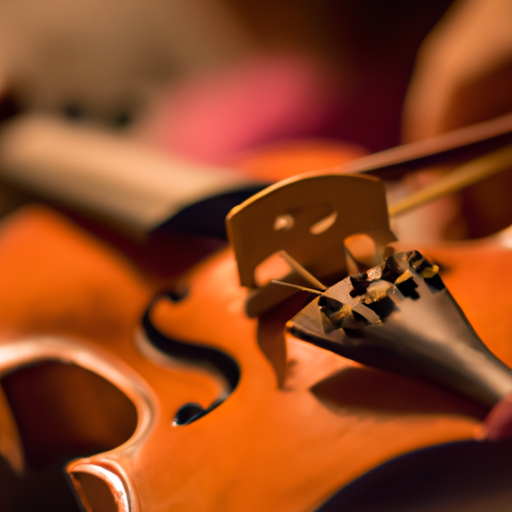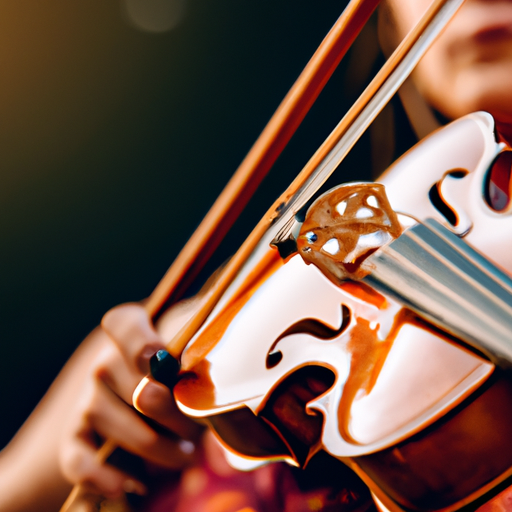
Playing the violin is a beautiful and rewarding musical experience. The violin is known for its rich and expressive sound, making it one of the most beloved instruments in the world. Whether you are a complete beginner or have some musical background, learning to play the violin can be a fulfilling journey that opens up a world of possibilities.

Anyone can learn to play the violin, regardless of age or musical background. While it may take time and dedication to become proficient, the process of learning to play the violin is an enjoyable and rewarding one. Whether you dream of playing classical melodies, folk tunes, or contemporary music, the violin can bring your musical aspirations to life.

Before embarking on your journey to learn the violin, it is important to choose the right instrument. It is recommended to start with a beginner or student model violin, as they are designed to be more affordable and easier to play for beginners. Consider renting a violin if you are unsure about committing to a purchase initially. It is important to have a properly sized violin that is comfortable to hold and play.
Proper posture is crucial for playing the violin. Stand or sit up straight with your back tall and relaxed. Hold the violin with your left hand, supporting the neck with your thumb and resting the body against your collarbone. Place your chin on the chinrest, ensuring a secure and comfortable position. Your right arm should hold the bow, while your left hand fingers press the strings.
Understanding the notes and how they are played on the violin is fundamental. The violin has four strings, each producing a different pitch when played. The strings are tuned to the notes G, D, A, and E. Learning the names of the strings and how they correspond to the notes on sheet music is an essential skill for any violinist.
Start by practicing the first few notes on the violin. Learn to play open strings, which means playing the string without pressing it down with your fingers. This will help you develop a sense of the pure sound produced by each string and build your coordination and finger strength.
Basic finger positioning is another crucial skill to learn. Use your left hand to press the strings down at specific points to produce different pitches. Mastering proper finger positioning will allow you to play melodies and create beautiful music on the violin.
Developing proper bowing techniques is essential for creating a beautiful and expressive sound on the violin. Hold the bow with a relaxed grip, using your index finger, middle finger, and thumb. Practice smooth and controlled bowing motions, paying attention to the angle and pressure applied to the strings.
Intonation refers to playing the correct pitch on the violin. Developing a good ear for intonation is vital for playing in tune. Regular ear training exercises and practicing with a tuner can help improve your intonation skills.
Vibrato is a technique that adds depth and emotion to violin playing. It involves a slight oscillation of the finger on the string, creating a warm and expressive sound. Mastering vibrato takes time and practice, but it is a valuable skill to develop as you progress in your violin journey.
Creating a practice schedule and sticking to it is essential for progress on the violin. Consistency is key, and regular practice sessions, even if they are shorter in duration, will yield better results than sporadic and longer practice sessions. Aim for at least 30 minutes of practice each day and gradually increase the duration as you become more comfortable with the instrument.
When practicing, focus on specific goals and areas that need improvement. Break down difficult passages into smaller sections and practice them slowly and meticulously. Use a metronome to develop a sense of rhythm and timing. Regularly record yourself playing to assess your progress and identify areas for further improvement.
Avoid common practice mistakes such as rushing through exercises, neglecting proper technique, and mindless repetition. Instead, practice with intention and focus on quality rather than quantity.
Learning to read sheet music is an essential skill for any violinist. Sheet music notation consists of symbols and markings that represent the pitch, duration, and expression of the music. Familiarize yourself with the basic symbols and terms used in violin sheet music.
Start by practicing simple melodies and exercises from beginner violin books. Take your time to understand the notes, rhythm, and dynamics indicated on the sheet music. Regular practice reading sheet music will improve your sight-reading skills and enable you to play a wide range of musical pieces.
The violin is a versatile instrument that can be played in various genres. Classical music is a popular choice for many violinists, and learning classical repertoire can help you develop technical skills and musicality. Dive into the works of composers like Bach, Mozart, and Beethoven to explore the beautiful world of classical violin music.
Folk music is another genre that is well-suited for the violin. From Celtic fiddle tunes to traditional folk songs, the violin can evoke the charm and spirit of different cultures. Explore folk music traditions and learn to play popular folk tunes to expand your repertoire.
Contemporary music offers violinists the opportunity to experiment with different styles and techniques. From jazz to pop and rock, the violin can be incorporated into modern genres, adding a unique touch to the music. Explore contemporary violinists and their works to discover new possibilities with the instrument.
Joining a local orchestra or ensemble is a great way to enhance your violin playing experience. Playing with other musicians will help you develop ensemble skills, improve your sight-reading, and expose you to a wider range of musical styles and genres. It is also an opportunity to make new friends and share your love for the violin.
Attending violin workshops and masterclasses can provide invaluable learning opportunities. These events often feature renowned violinists who share their expertise and offer guidance on technique, interpretation, and performance. Participating in workshops and masterclasses can inspire and motivate you to reach new heights in your violin playing.
Online violin communities and forums are another way to connect with fellow violinists from around the world. These platforms allow you to share your progress, ask questions, and seek advice from experienced players. Engaging with an online community can provide support and encouragement throughout your violin journey.
Proper cleaning and maintenance of the violin are essential for its longevity and optimal performance. Use a soft, lint-free cloth to wipe the instrument after each use to remove rosin residue and dirt. Avoid using harsh chemicals or excessive moisture that may damage the wood.
Regularly check and replace violin strings as needed. Strings lose their vibrancy and tone over time, and replacing them will ensure a fresh and vibrant sound. Consult with a professional luthier or violin shop for guidance on choosing the right strings for your instrument.
In addition to string maintenance, other common repairs may be needed for your violin. These repairs can include adjusting the soundpost, bridge, and pegs, as well as addressing any cracks or structural issues. Seek the assistance of a qualified violin repair specialist for any necessary repairs or adjustments.
The joy of playing the violin is truly unmatched. As you continue to learn and grow as a violinist, remember to enjoy the journey and embrace the challenges along the way. With dedication, practice, and a love for music, playing the violin can bring endless fulfillment and lifelong musical enjoyment.